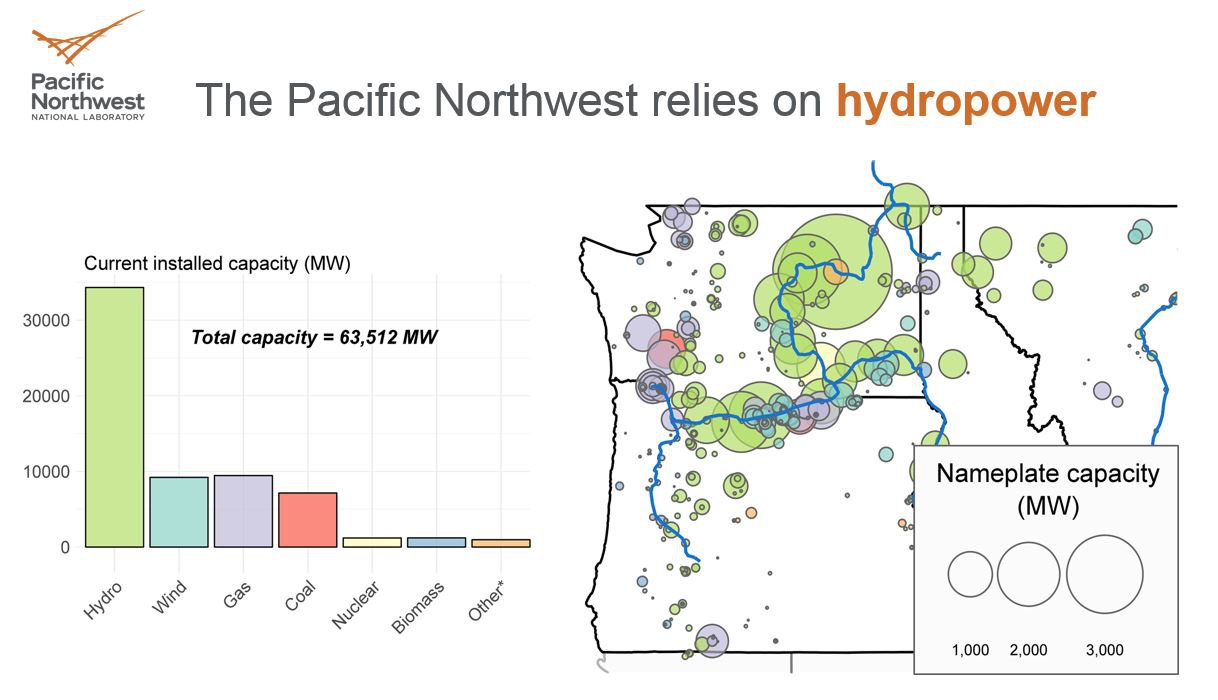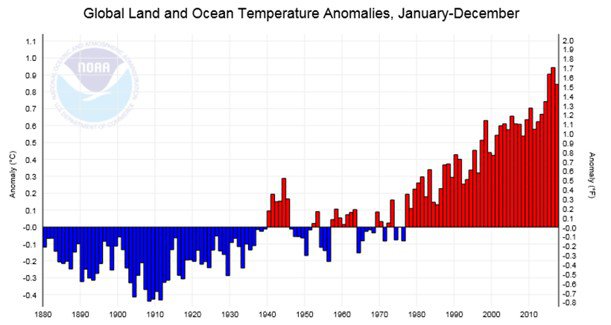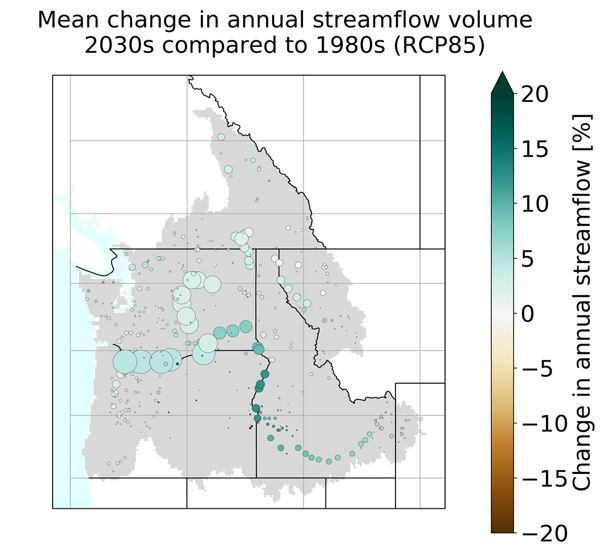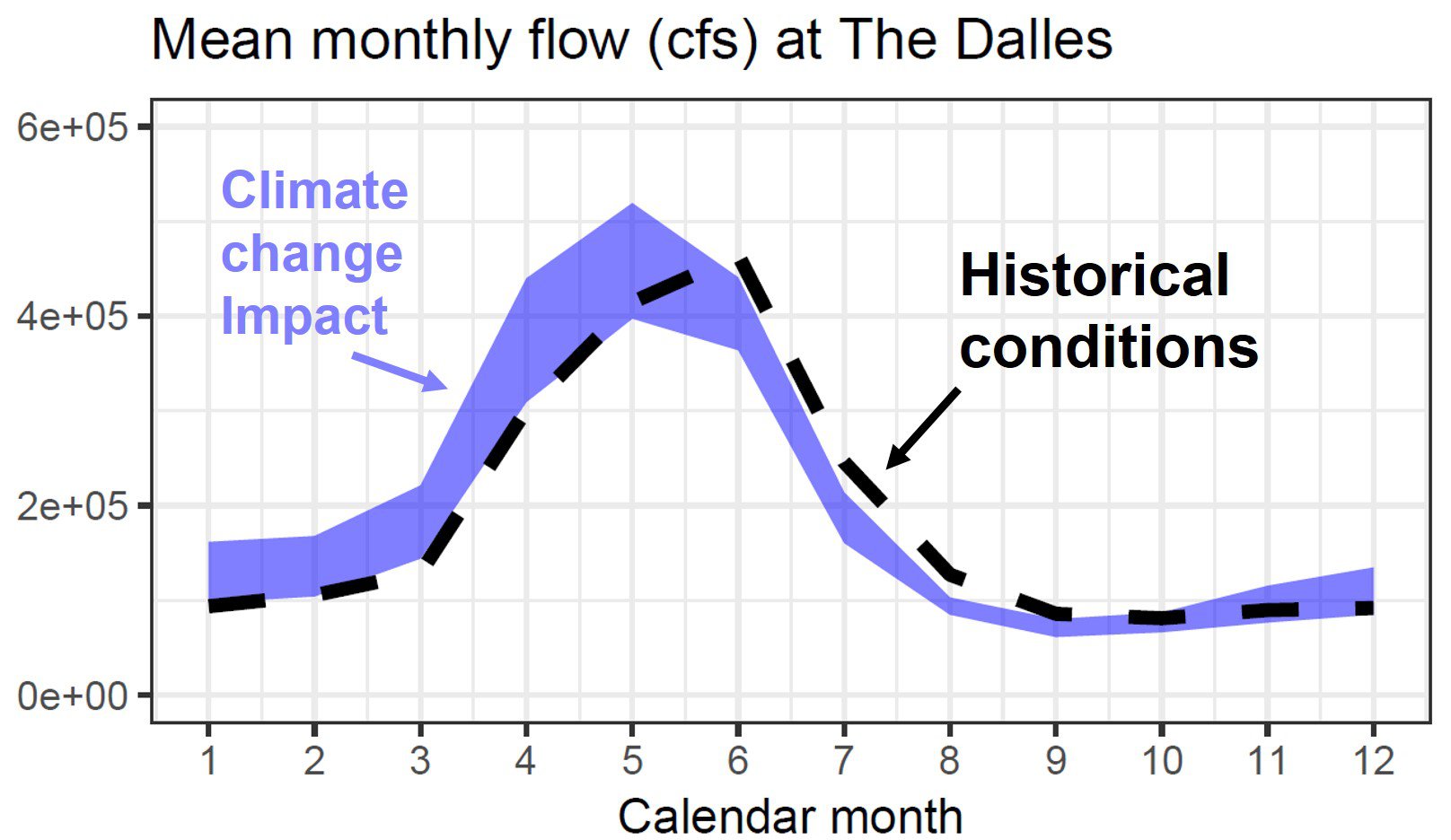Climate Change Challenge In The Columbia River Basin: Managing Water For Hydropower and Fish Migration
- November 20, 2018
If the effects of a warming climate play out as expected in the Pacific Northwest – warmer and wetter winters with less snow and more rain, warmer and drier summers –the way hydropower dams are operated in the Columbia River Basin, collectively the region’s largest source of electricity, will have to change in order to continue to maintain reliable electrical service and to continue to provide river flows for salmon and steelhead that migrate to the ocean as juveniles and return to spawn as adults.
It’s a question of managing water in the Columbia River system as the warming climate changes water availability and seasonal demand for power – with potentially higher river flows and lower demand in the winter, but lower river flows and higher demand in the summer.

The presence of greenhouse gases such as carbon dioxide and methane in the atmosphere is believed to contribute to a warming climate by reflecting back to the Earth the heat that would otherwise escape through the atmosphere into space. These gases are a normal part of the air we breathe, but the current problem is that levels are rising, and dramatically.
“We actually want greenhouse gasses in the atmosphere, just not too much. Otherwise it would be a very cold planet,” climate scientist Erik Pytlak told the Council at its November meeting in Portland. Pytlak is the manager of the Weather and Streamflow Forecast Group at the Bonneville Power Administration. “The issue we’re dealing with is that greenhouse gas levels are higher now than in millions of years, and the amount is increasing rapidly.”
Bonneville sells electricity generated at 31 federal dams in the Pacific Northwest (29 in the Columbia River Basin), and one non-federal nuclear plant, supplying about 40 percent of the power consumed in the region. Thus, the agency has a vital interest in understanding how a warming climate may change the timing and amount of precipitation and the resulting river flows in the Columbia River and its tributaries.
Current research suggests that while future water volume and river flows will continue to be important for fish migration and hydropower, an equally important issue – and one that can be manipulated to a limited extent for fish and power benefits – is the timing of water releases from storage reservoirs. Observations around the world demonstrate that the global atmosphere has been warming rapidly since the 1970s, with temperatures up an average of 1.7 degrees Fahrenheit in that time and expected to increase between 1 and 4 degrees by the 2030s, Pytlak said.


“2016 was the warmest year since the 1880s and possibly the warmest in over 2,000 years,” he said. “What is more concerning is that the last time atmospheric carbon dioxide levels were this high was 3 million years ago, and at that time sea levels were 60-80 feet higher.” He said the observed warming can only be explained by models that include atmospheric carbon dioxide increases.

Since 2013 the River Management Joint Operating Committee (RMJOC), which includes Bonneville, the U.S. Army Corps of Engineers, and the Bureau of Reclamation has been working with climate scientists at the University of Washington and Oregon State University to study future climate scenarios. The modelling includes 172 scenarios of possible future precipitation and temperature patterns, and the overall result is clear.
“No matter what scenario we use, we see warming going forward,” he said. The warming will be more pronounced in summer, compared to current average temperatures.
The results are not all bad, though.
“There is good agreement on wetter winters, decent agreement on wetter springs and drier summers,” he said. Nine of the 10 climate models chosen for analysis show either increasing annual precipitation in the Columbia River Basin, or no change from current levels, he said. That outcome would be less dire than what is forecast for other parts of the country, such as the desert Southwest.
The RMJOC study points out that carbon dioxide in the atmosphere currently is near 410 parts per million and is expected to increase to more than 1,000 parts per million by the year 2100. In light of this, the RMJOC partners are working to provide a realistic range of possible future scenarios for long-range water and power planning while accounting for the global warming trend, Pytlak said.
By the 2030s, higher average winter streamflows, earlier peak spring runoff, and longer periods of low summer flows are very likely, the modeling suggests. He said the greatest streamflow changes likely will be in the Snake River Basin, but that it is less certain than predictions for the Columbia because there is greater uncertainty about future Snake River flows.
“These changes may impact flood risk management, hydroelectric generation patterns, energy consumption, and ecosystems,” he said. Hydropower impacts will be the focus of future studies by the RMJOC collaborators. Results to date have been published in a report entitled, “Hydrologic Response of the Columbia River Basin to Climate Change,” which is posted on the University of Washington’s website here.
Link:
River Management Joint Operating Committee research presentation



